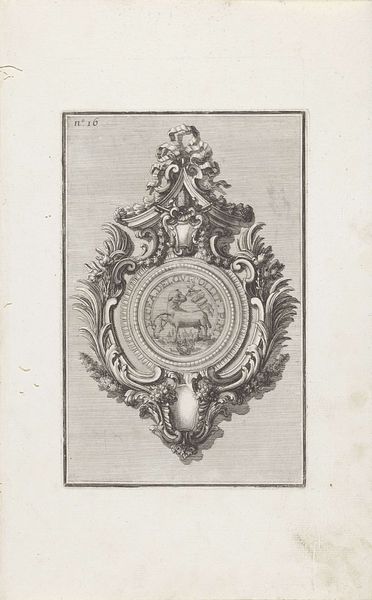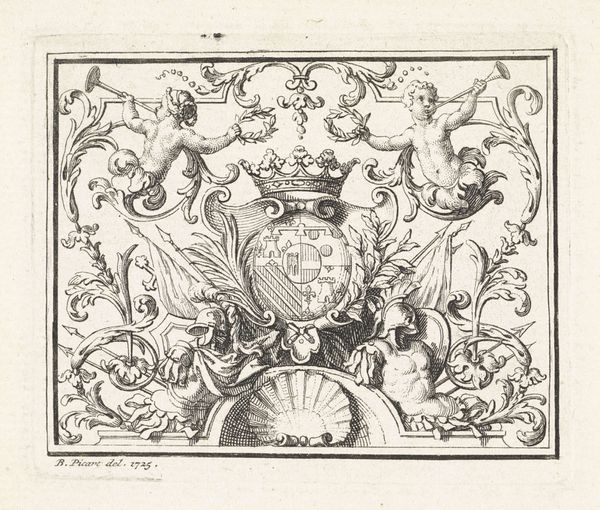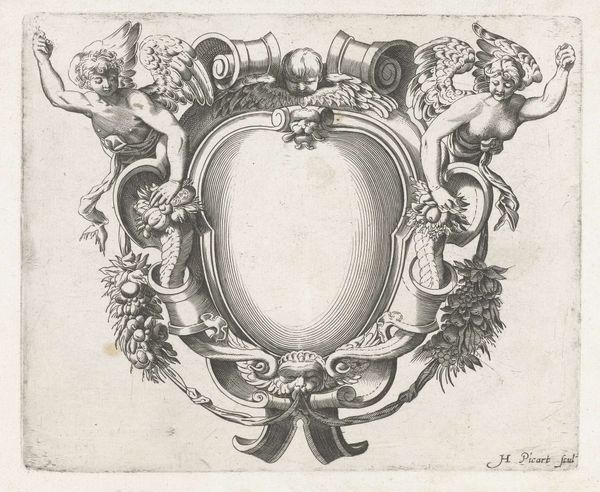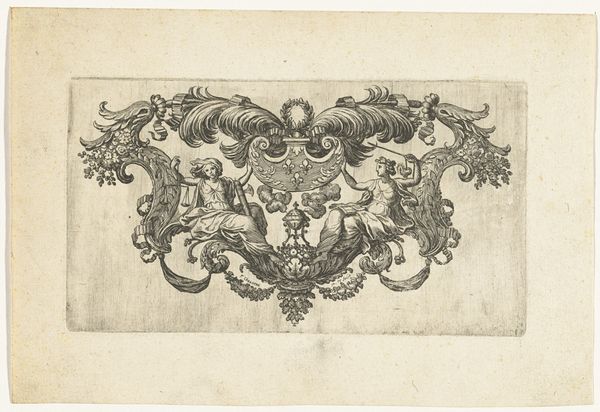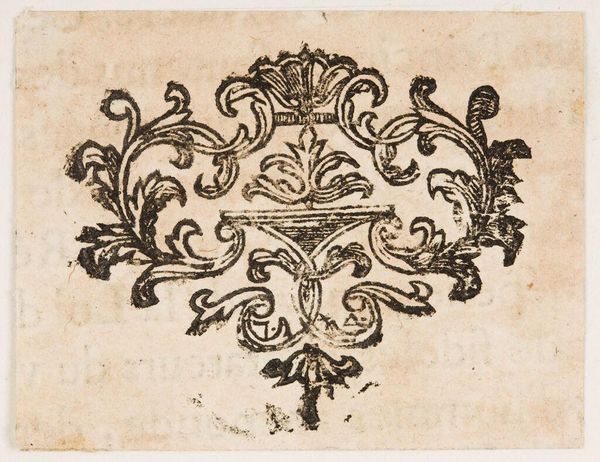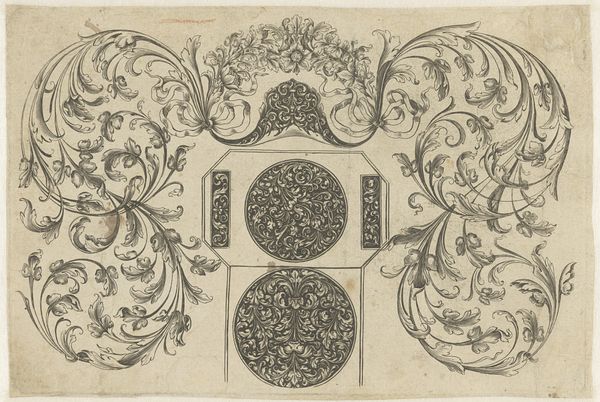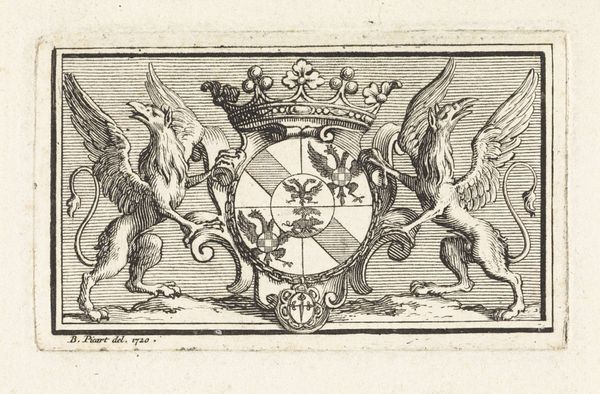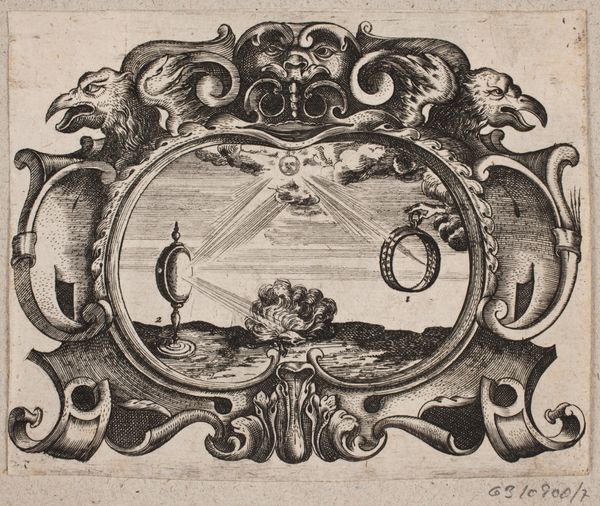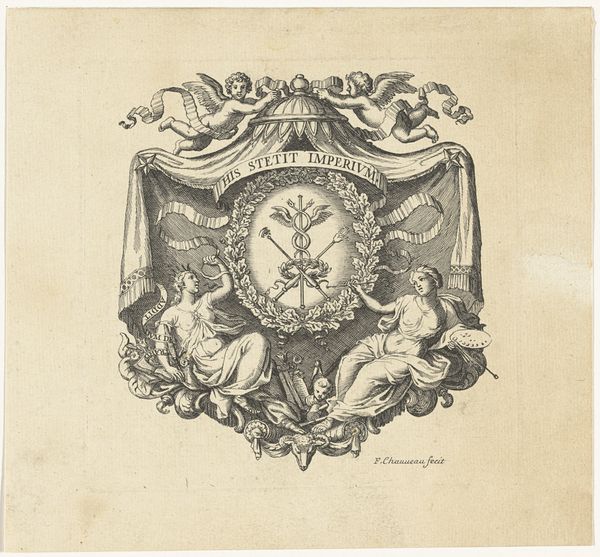
print, engraving
#
baroque
# print
#
figuration
#
decorative-art
#
engraving
Dimensions: height 138 mm, width 147 mm
Copyright: Rijks Museum: Open Domain
Curator: Standing before us is the title page, "Randornamenten en Spitsen," created in 1618 by H. Picart. It is an engraving, showcasing an elaborate decorative design. Editor: My immediate reaction is how ornate and fantastical it appears! The combination of these strange hybrid figures and symmetrical ornamentation gives it a distinctly baroque feel, like something plucked from a dream. Curator: Absolutely. Its dense symbolism situates the piece within a period deeply shaped by socio-political tensions. We have monstrous, hybrid figures holding aloft scales. How do you interpret these scales of justice? Consider the gendered implications and visual power dynamics. Editor: For me, the scales immediately suggest a concern with justice or equilibrium, which can easily connect to systems of commerce. The scales also indicate labor or craft. What’s fascinating is the intricate work involved; someone had to physically craft this, an artisan pouring their skills into such fine details. Curator: Precisely, that interplay is critical. And notice the hybrid creatures. Half-human, half-beast, winged but with fish-like tails – it pulls from classical mythology. Editor: It highlights that moment of transition into modernity. Baroque emerged from, and in resistance to, the Reformation. Ornament becomes associated with indulgence, and as an artisanal object, this speaks volumes about patronage. Curator: Good point. And the inscription within the frame clearly identifies the printer, further cementing this image's role within early modern print culture. Considering it’s intended as a title page, its ornamental structure reflects that print was an elaborate process involving specialized work. The choice of such imagery is deeply purposeful. Editor: There is such exquisite complexity! To think about who controlled these presses, the labour invested in the process – these objects tell us about early distribution of labour. Curator: It does serve to prompt a more considered dialogue about the cultural forces influencing both its creation and our continued interpretation. Editor: For me, the object offers a really strong argument against the digital production methods of image creation and dissemination. It underscores how physical labor contributed to disseminating image.
Comments
No comments
Be the first to comment and join the conversation on the ultimate creative platform.
